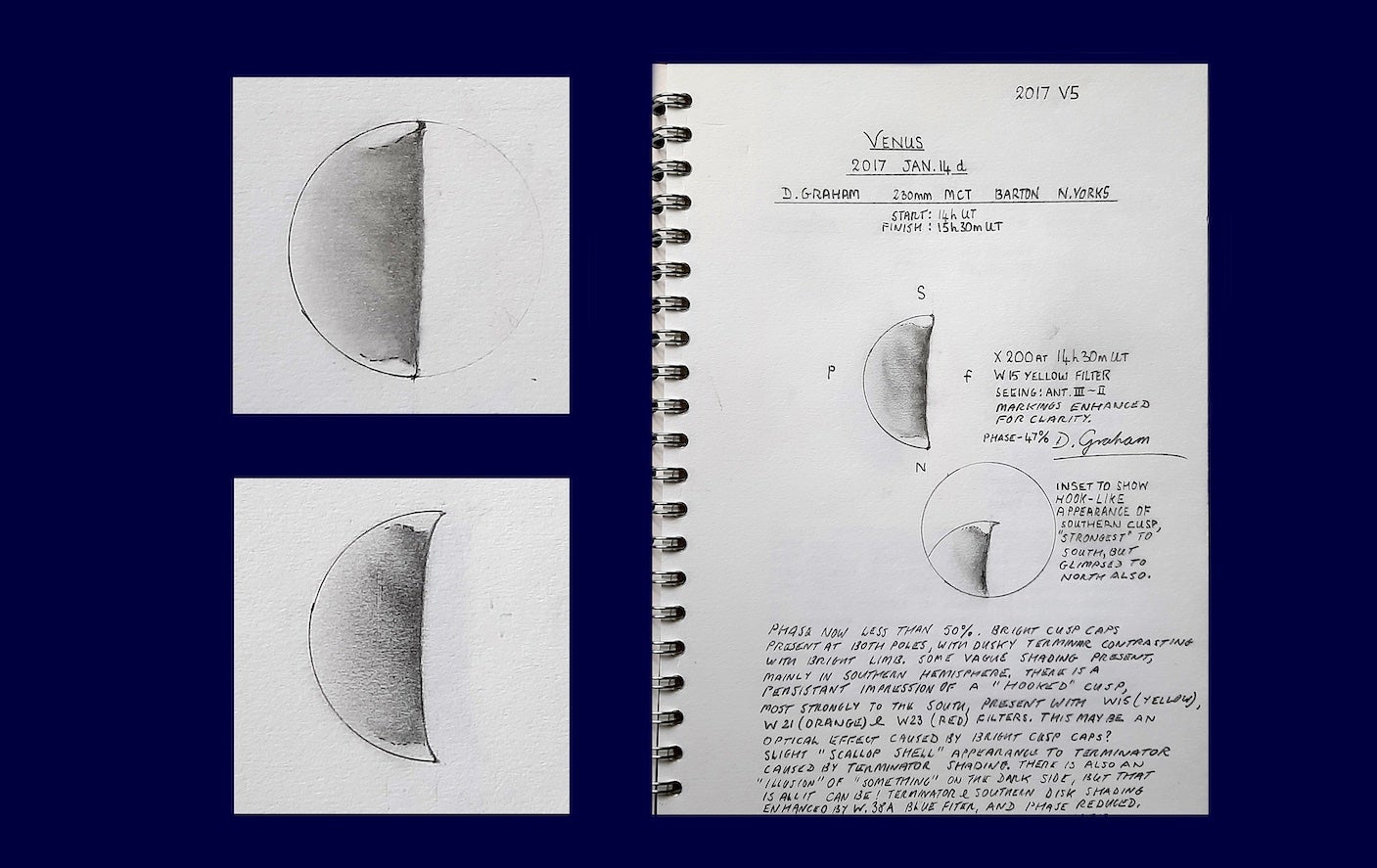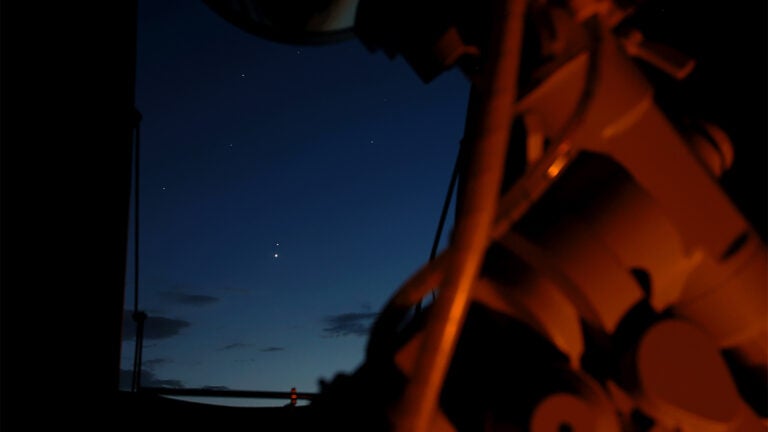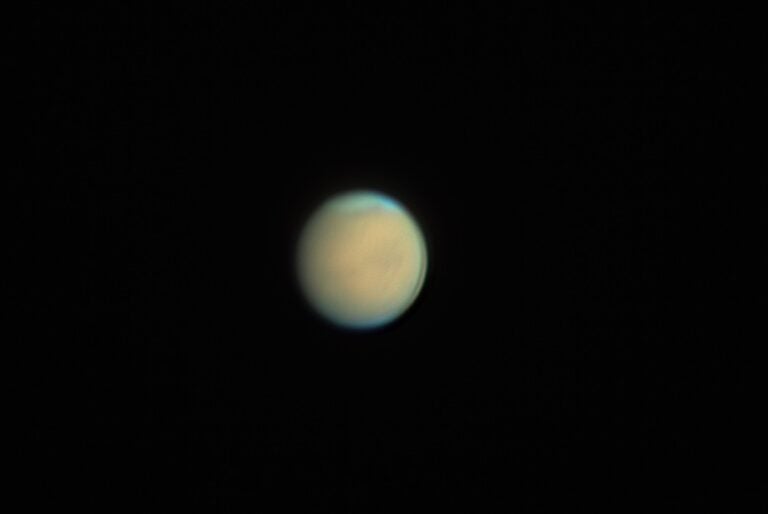
Venus, the brightest planet — and paradoxically one of the greatest visual challenges through any telescope — reaches greatest eastern elongation June 4 at 16h11m UT, 13 hours after the planet achieves dichotomy (half-phase). If you’re up for a telescopic adventure that will test your visual mettle, now is a great time to search for elusive cloud features on our sister world.
The surface of Venus is blanketed by an impenetrable cloud layer of sulfuric acid and aerosols. Although the planet looks featureless to the casual viewer, it is tantalizing to the skilled observer. Ever since Giovanni Domenico Cassini, the first director of the Paris Observatory, noticed bright and dark spots on Venus in 1666 and 1667, patient observers have spied a variety of subtle details in this most enigmatic of atmospheres.
Venusian cloud features are most apparent around greatest elongation, when the planet appears farthest from the Sun in our sky and can be studied in daylight. In his 1891 volume Telescopic Work for Starlight Evenings, British amateur astronomer William Frederick Denning asserted that “the lustre of Venus is so strong at night that her disk is rarely defined with satisfactory clearness.” If you want to maximize your chances of success, take Denning’s advice: Observe in daytime, or near sunrise or sunset.
The cloud features commonly seen on Venus can be grouped into three categories by latitude: bright polar cusps, sometimes bordered by a dark collar; fingerlike shadings projecting from the terminator; and bright and dark spots, including mottling.
These features, seen throughout the ages by capable observers, are supported by modern spacecraft observations. The Venus Monitoring Camera on the ESA’s Venus Express has found that (1) at high latitudes, the cloud structure appears as a dense, almost featureless haze forming a kind of polar cap, sometimes with dark streaks; (2) at mid-latitudes, clouds appear streaky; and (3) near the equator, the shapes are spotty and fragmented. The data also suggest a global north-south symmetry of the overall cloud top structures.
According to Richard McKim of the British Astronomical Association (BAA), a study of observer reports from 1999 to 2009 showed that ultraviolet images of Venus “agree well with the best visual drawings, and especially with those made in blue or violet light, so there is no doubt that quality visual data are still highly valuable.”
The planet’s bright cusp caps, which can be seen through instruments as small as 2.4 inches, often appear with a dusky terminator that can show deformation, according to BAA planetary observer and artist David Graham of Barton, North Yorkshire. The latter is an optical effect caused by bright or dark shading being present next to it. Graham, who uses a 9-inch Maksutov-Cassegrain telescope, says all his observations are made in broad daylight, usually with Baader filters (blue, yellow, orange, and red). The blue filter especially allows cloud features to be enhanced, he says.
Features in the clouds of Venus may give us a glimpse of activity deep inside the planet. In the winter 2009 issue of The Strolling Astronomer, Michael F. Mattei reported 21 bright terminator bulges that appeared in archival data. Using software to plot the locations, Mattei found that in all 21 cases, the bulges were at or near the locations of three volcanic structures on Venus: Maat Mons, Ozza Mons, and Sapas Mons.
Are these volcanoes on Venus currently erupting? In 2015, researchers reported in Geophysical Research Letters that Venus Express recorded a series of hotspots at several locations, fading within days. These observations “make a strong case” that Venus is volcanically active today, geologist James Head of Brown University noted in a news release at the time.
So take this opportunity to study Venus like you’ve never studied it before. Who knows what you’ll discover? As always, send your thoughts/observations to sjomeara31@gmail.com.









